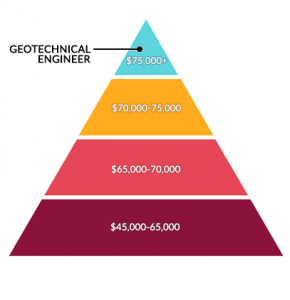The Basic Principles Of Geotheta
The Basic Principles Of Geotheta
Blog Article
The Facts About Geotheta Uncovered
Table of ContentsGeotheta for DummiesSome Known Facts About Geotheta.Geotheta Things To Know Before You BuyThe Facts About Geotheta Uncovered
They team up with civil designers, structural engineers, designers, and various other experts to incorporate geotechnical considerations right into the total project style and building and construction process. This needs effective team effort, sychronisation, and interaction to make sure that the geotechnical facets straighten with the job purposes and meet governing demands.Mining & Materials Design: Principles of exploration, infiltration rates, and variables impacting the choice of exploration technique. Qualities of nitroglycerins, shooting systems and blast patterns. Blasting methods in surface and below ground operations. Unique blasting methods at excavation borders. Vibration and sound control. Mechanical and continual approaches to fragmentation, consisting of longwall shearing and fullface boring.
Modelling of piece and bit dimension distributions; comminution as a transfer function. Comminution innovation: crushing, grinding, dimension category. Integrated evaluation of fragmentation and comminution procedures. Supplied by: Mining & Products Engineering.
The 2-Minute Rule for Geotheta
Bachelor's level programs in civil, geotechnical, geological, and environmental design normally last four years and consist of basic education courses in English, social science, and the humanities, as well as courses in sophisticated mathematics, architectural geology, and fluid mineralogy. (https://www.metal-archives.com/users/geotheta)
Geotechnical design involves the assessment of the soil and rock problems at a particular website, and their effects for the growth of that website. As most frameworks count on the ground for support, it lacks shock that a detailed understanding of the ground problems, and the suitability of structure systems, are important to the long-lasting stability and performance of the building or framework.
Specialising in the investigation of geological formations and ground behaviour, geotechnical designers do clinical investigations and screening to recognize the effect these geological developments may have on the layout and building and construction of building, civil and framework projects. This knowledge is important for the layout and construction of buildings, roadways, tunnels, dams, bridges, and water supply and sewer system.
The geotechnical group at Douglas Partners routinely talk to designers, layout engineers, designers, and building contractors to make recommendations on style and advancement propositions to guarantee that the developed frameworks are accordingly created for the ground problems. As an example, the style of footing systems requires to think about the weight of the framework, the capacity of the ground to sustain that weight along with movement tolerances and reliable building.
The Facts About Geotheta Revealed
This job is significantly streamlined by the usage of our Douglas Map geospatial system that makes this info conveniently available in a simple to make use of web browser interface. A geotechnical designer will certainly guide the drilling of boreholes and test pits to collect dirt and various other samples, and likewise examine surface features and ground direct exposures to form a geotechnical version of the subsurface problems.
Depending on the job type and ground conditions ran into, lab screening may to name a few points evaluate toughness, compressibility, reactivity and/or leaks in the structure of dirt and rock examples. After this data is accumulated and collated, the results are utilized for a geotechnical design of the site, which is usually provided as sections throughout the site.

A geotechnical investigation naturally can just assess the ground conditions at the areas pierced or dug deep into. Natural variants in soil and rock conditions can happen throughout a website and in between examination places. It is as a result excellent method that the geotechnical engineer be preserved throughout building and construction of the task to give on-site verification that the ground conditions run into are consistent with the assumptions and recommendations given in the geotechnical examination record.
Getting My Geotheta To Work
Geotechnical engineers utilize their thorough knowledge of dirt and rock to assess risk and resolve issues on diverse framework projectsGeotechnical design is a specialist branch of civil design which checks out the behaviour of planet materials and the application of dirt and rock mechanics. Engineer of Record. As a geotechnical designer, you will evaluate the physical, mechanical and chemical residential or commercial properties of soil and rock in order to make structures, retaining frameworks and earthworks
Geotechnical design is carefully connected to and overlaps with, both engineering geology and ground engineering - https://medium.com/@ianhammond2191/about. It's possible to specialise in geotechnics or job for a geotechnical firm but be referred to as an engineering rock hound or a ground designer. As a geotechnical engineer, you'll require to: build and preserve connections with clients and other professionals Get the facts involved in the site, throughout each projectmaintain safety criteria on website bear in mind expense effects when you make recommendationsstudy geological maps and airborne pictures from a variety of resources and from different time periodsexamine construction plans to see exactly how practical they are based upon your understanding of the siteinvestigate risks or geological dangers for the sitesearch for eco sensitive functions, such as landfill beginning to create factual and interpretive ground modelsplan field investigationsdrill and evaluate samples of bedrock, dirt, groundwater and added materials manage various other experts on sitesolve technological issues as they develop, such as unforeseen frameworks at drill sitesmonitor problems throughout and after building and construction to see to it structures are steady in the brief and long termadding data collected on site to your first researchcreating geotechnical calculations, illustrations, and 2 or three-dimensional computer system versions analyzing the datamaking recommendations about the proposed use the site

Report this page